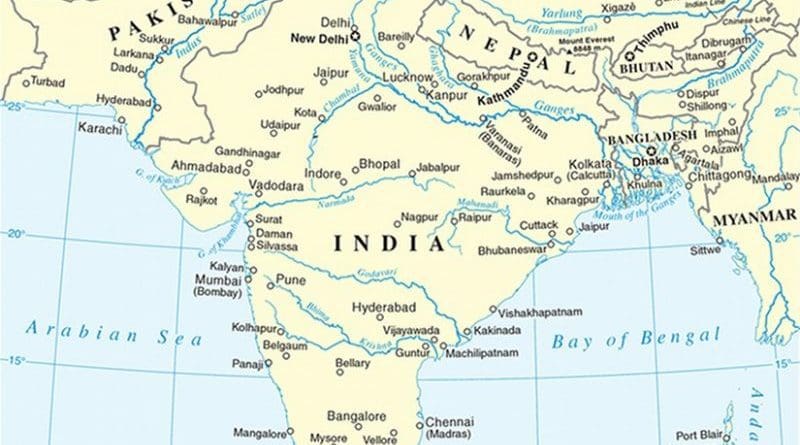Shifting Power Equations And Geopolitical Uncertainties In South Asia – OpEd
The South Asian region has been witnessing uncertain geopolitical dynamics around sore trouble areas like Afghanistan, Kashmir, shifting American and Russian relations with India and Pakistan and enhanced Chinese footprint with Pakistani and other smaller powers’ assistance. Major external powers which influence South Asian geopolitics are the US, Russia and China.
While the US-Pak relations have taken a nosedive after the Trump Administration declared military aid cuts, Pakistan is trying to offset the loss by courting China and Russia. China has already heavily invested in Pakistan to fulfill its geopolitical dream project – One Belt One Road initiative. Russia and Pakistan are inching closer as defence partners and trying to combine their efforts at fighting terrorism.
On the other side, the Trump Administration expressed its willingness to forge close defence ties with India and cast India in a more prominent role in its Indo-Pacific policy and Afghan strategy. India’s strategic relationship with Russia is at crossroads given pro-western thrust in its defence and trade policies.
Notwithstanding these shifts in relations, no clear alliances are visible. Russia would find it difficult to alienate India which has still deeper engagement in the area of defence as most of the defence equipments and technology still remain Russian. India has also shown interest in clinching new defence deals with Russia as it does not want to lose its old partner as the signing of a $500 billion deal to purchase the S400 air defence system from Russia suggests and it would also not like to see Russia-Pakistan relations grow at Indian expense.
The US, on the other hand, expressed its displeasure at the Indian move to buy air defence system from Russia – the state with which any major defence deals are to face sanctions under the American law.
Similarly, the US would find it difficult to abandon Pakistan despite its displeasure and rhetoric castigating Pakistan for not doing enough to contain militancy against US presence in Afghanistan. Alternatives to Pakistani intelligence inputs to curb militancy and supply routes for NATO convoys are not already available with the US. US-Iran tensions and Russian caution against any heightened US presence in its backyard would drive the impetus of American dependence on Pakistan for supply routes.
Indo-US trade relations face certain challenges which according to many would make the strategic bonding between the two complicated. Modi’s ‘Make in India’ initiative and Trump’s ‘America first’ policy only heighten the possibilities of more protectionism from both sides. Both have sued each other in WTO on a host of trade issues. Another factor that may detract from the strategic engagement between India and US is India’s willingness to involve Russia into its Indo-Pacific policy framework which runs against the American strategy of formation of a closed group of allies and containment of China.
Kashmir is not only the bone of contention between India and Pakistan, it has so far been able to influence Afghan geopolitics, China-Pak relations, role of non-state actors like militant groups and more importantly, undercut possibilities of regional integration in South Asia. Ceasefire agreement along the Line of Control signed between India and Pakistan in 2003 has been continuously violated resulting in military and civilian casualties in both sides. Militant groups which perpetrated attack on the Indian Parliament and masterminded Mumbai terror attack are not brought to justice. This volatility in along the Indo-Pak border has only helped in intensifying tensions and external powers’ role in the region.
While China dilutes India’s claim to Kashmir as its integral part given the ‘One Belt One Road’ project goes through Gilgit-Baltistan region, other external powers have preferred not to poke their nose in the bilateral issue. Given American suspicion of Chinese geopolitical objectives, China cannot pamper Pakistan beyond a limit and antagonize the US with which it has robust trade and investment engagements. However, growing militancy in Kashmir has found resonance in Afghanistan and vice versa.
While the US thinks that Pakistan is not doing enough to contain militancy in Afghanistan and some in the Trump Administration have also alleged the Pakistani intelligence agency, ISI maintaining close ties with militant groups, Pakistan claims it has been doing its job as best as possible and has forced the al-Qaeda remnants out of its soil. Many scholars argue that while Pakistan has taken actions against the al Qaeda, it has not done so against the Taliban and Haqqani militant outfits. Some leaders in Pakistan believe that Pakistan cannot turn the militants into its perennial enemies as the US may quit Afghanistan after its job is done as it happened in the beginning of 1990s. India and Pakistan are locked in a blame-game each castigating the other in fomenting militancy against the other. India, while has been insistent that Pakistan harbours terrorist outfits like Laskar-e-Taeba in its different forms and uses them in fomenting cross-border terrorism, Pakistan has been alleging India of fomenting Baloch insurgency and using anti-Pakistani elements in Afghanistan.
Peace has so far been elusive in South Asia. Shifting power equations and areas of tensions keep the region boiling and intensify arms race. Peace and development can only be realized if regional integration happens and external players play a benign role instead of promoting their own interests.
Mutual distrust lies at the heart of undercutting any possibility of unification. When the incumbent Indian government under the leadership of Narendra Modi made a host of unilateral gestures and promises on India’s part to push the regional trade and connectivity ahead in the SAARC forum, most of these gestures were viewed as mere promises rather than concrete offers by the South Asian leaders and analysts given the historical perception of India by its neighbours. Smaller states in South Asia have been courting China to balance any perceived threat from India. Sub-regional groupings and ventures are replacing ties at the regional level but that does not augur well for the region.

